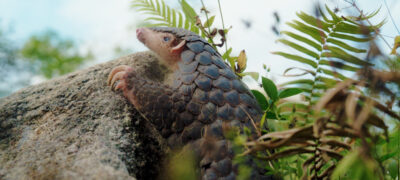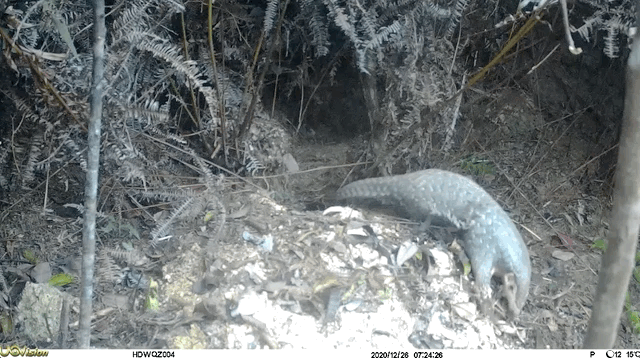
Chinese pangolins are making a comeback! WildAid ambassador Wang Yibo teamed up with us for our latest campaign in China, spreading the good news and encouraging the public to help keep up the momentum by saying no to all pangolin products.
Pangolins are one of the most unique animals in the world with their armor-like scales, long sticky tongues, and prehensile tails. These elusive, nocturnal mammals play a key role in the balance of the ecosystem; their burrows provide shelter for at least 60 species of terrestrial vertebrates and can also enrich plant life throughout their habitats.
Sadly, due to habitat destruction, poaching, and illegal trade, populations of Chinese pangolins have declined over the past several decades, making them increasingly rare in the wild. The species was even thought to be functionally extinct when assessed in 2019.
In June 2020, China upgraded all pangolin species found within its borders from Class II to Class I nationally protected wild animals, giving them the highest level of legal protection. With the upgrade in protection came an increase in efforts to understand pangolins, particularly through research and monitoring.


As more infrared camera monitoring projects roll out in pangolin habitats across the country, more “surprise shots” of Chinese pangolins are being captured. These images reveal an improvement in habitat conditions and an uptick in their numbers in the wild!
Setting up infrared cameras is a technical task, but something that our partners at the Xizi River Ecological Conservation Center (XREC) have mastered. The camera is usually set up at the entrance of burrows that Chinese pangolins might reuse, or at paths, water sources, or other locations where animals are likely to appear. It contains an infrared sensor that automatically triggers recording for 15 seconds when an animal passes by [due to the temperature difference]. The camera operates 24 hours a day, and staff assess the equipment every 3 to 4 months.
In addition to capturing every move of the pangolins, the cameras also often record “group photos” with neighboring small animals like rodents and civets. These cameras have been crucial in helping researchers understand pangolin behavior, which will guide the most effective approach to their conservation.
In order to bring awareness to this initiative, WildAid ambassador Wang Yibo recently joined us on a field mission with XREC to help set up some of these cameras personally. We documented his journey in our upcoming short film that highlights China’s efforts to bring back their pangolins, aiming to inspire viewers around the world to become pangolin champions.


To enhance the film’s message, we also released billboards and a PSA across China featuring Wang Yibo encouraging people to help Chinese pangolins rebound by pledging to say no to all pangolin products. In just three days of its release, our PSA garnered 13 million views across China, with the hashtag #DoNotPurchasePangolinProducts receiving 63.63 million views and 70,000 Weibo bloggers creating their own posts about this topic. We are thrilled to have pangolins in the spotlight and will expand this reach by distributing these media materials on our global channels. We hope to recruit pangolin supporters from around the world to keep this momentum going!
Protecting the Chinese pangolin requires not only scientific research and robust law enforcement but also the participation of every ordinary person: start by refusing to consume pangolins and their products, report illegal pangolin trade, and spread the message of pangolin protection.
Stay tuned for the release of our pangolin film, coming summer 2024!
The infrared camera images in this article are sourced from the Xizi River Ecological Conservation Center.
References:
Guangdong Provincial Local Standards. Technical Process for Monitoring the Population Quantity of Wild Chinese Pangolins.
Zhang Yulin et al., Exploring the Factors Influencing the Complete Events of Chinese Pangolins Entering and Exiting Burrows Monitored by Infrared Cameras. Journal of Wildlife. 2023, 44(1): 31-37
Stay in touch and get the latest WildAid updates.
SIGN UP